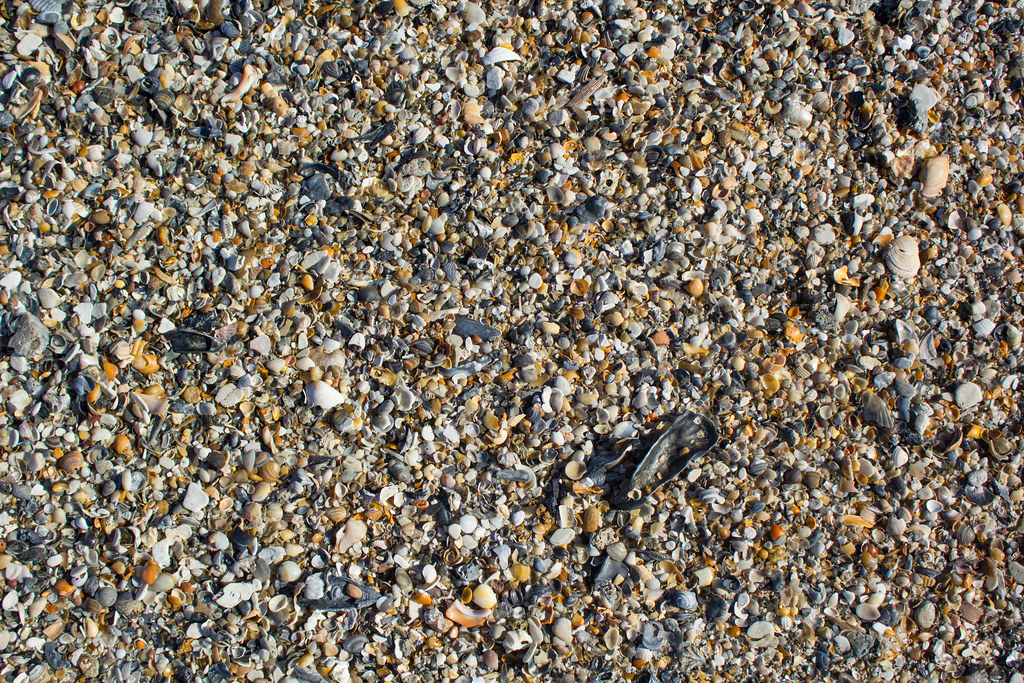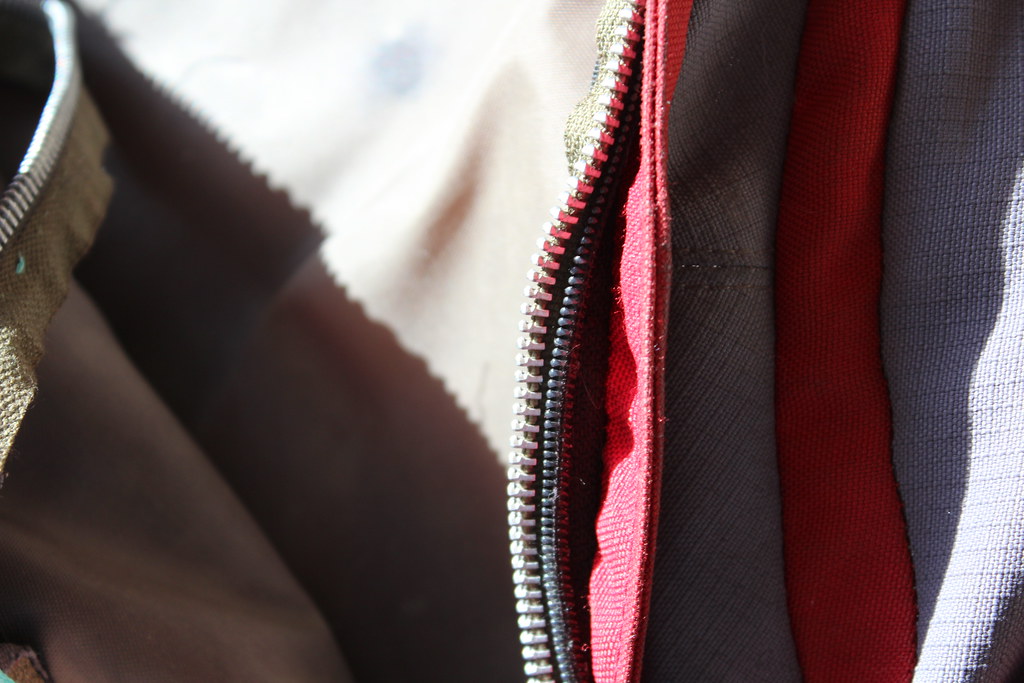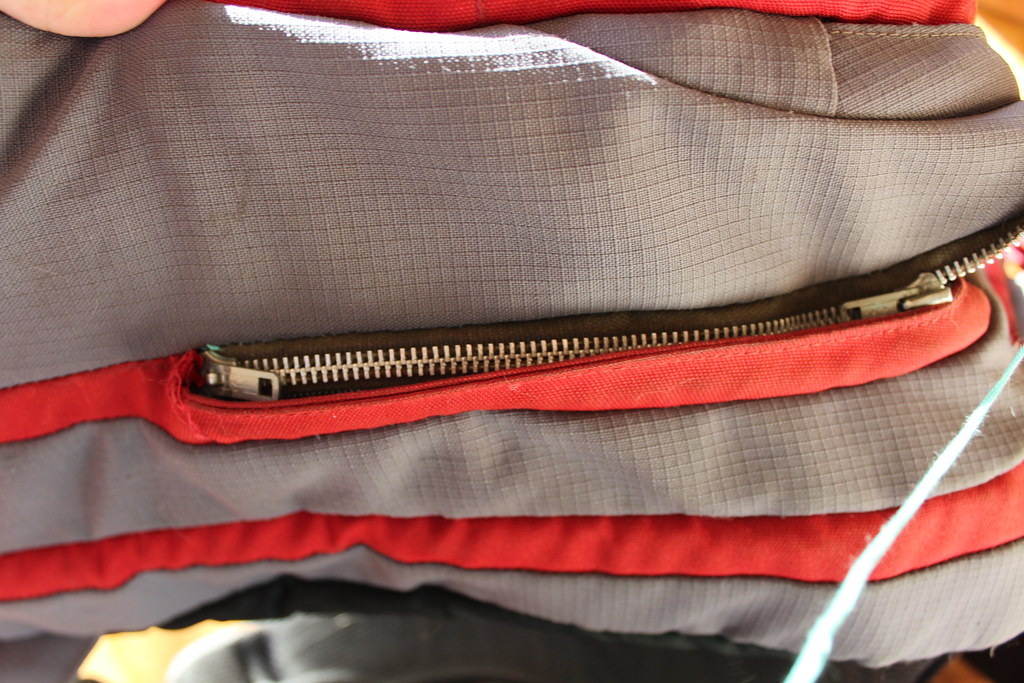The rights have reverted back to me for a number of blog posts I did for Jordana Paige’s blog a few years ago, and I’ve begun re-posting them on occasion to have them on my own website, and so students can reference them. This particular tutorial about setting a zipper into a sweater, I’ve updated and refreshed, but much of the technique remains the same.
Setting in a zipper is a process that takes time, patience, and a certain amount of willingness to fiddle. Not everyone likes to do that, which is why so many of the finishing projects I do involve setting in zippers. But if you’re willing to take the time, setting in a zipper can be very satisfying!
To set in a zipper you will need: a zipper, yarn to match the garment, yarn (or embroidery floss) in a contrasting color, a sewing needle (with a sharp point!), pins, and the 2 sides that you are attaching to the zipper.
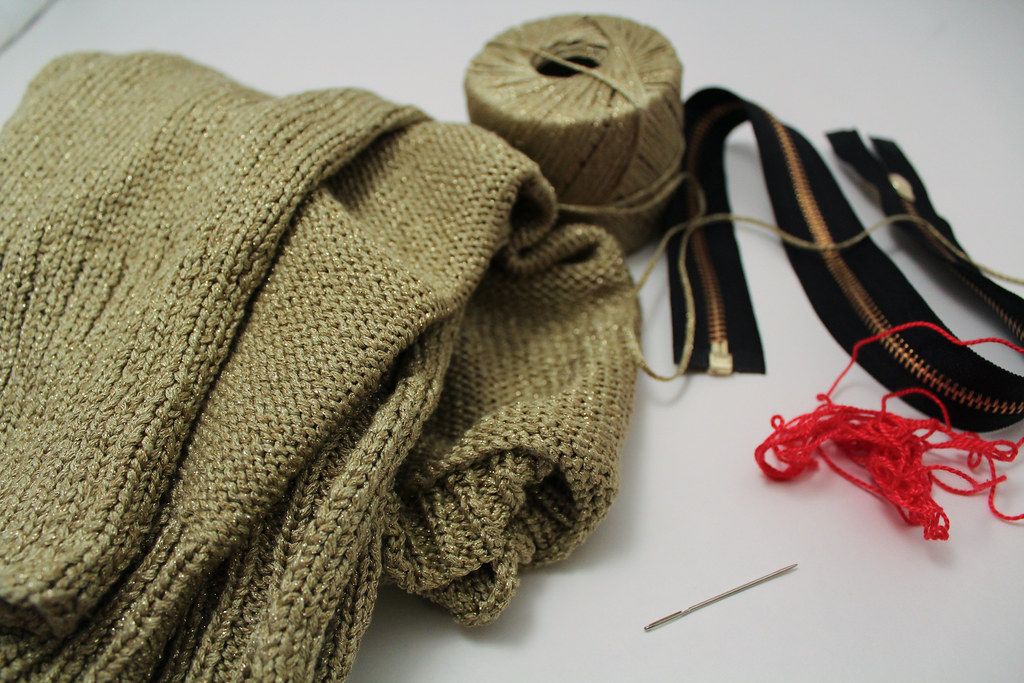
It’s helpful to have all your materials available!
Please note: When purchasing a zipper, make sure you get the correct type! You don’t want a zipper for a bag, as it is attached together at both ends – you’d never be able to get your garment off! Same thing with double ended zippers. Take time to read the package and know what you are getting. Also pay attention to length. As I explain below, get the right size zipper, or a little longer.
The first thing I do is block the two fronts to the garment I’m attaching the zipper to. Make sure the front is blocked to the correct measurements, and that your zipper will match those measurements, or be slightly longer. If you need to, you can trim the top of the zipper to the length you want. Make sure you use a file to eliminate any rough edges, and sew a new stopper so your zipper tab doesn’t come off.
Next, pin the zipper into place on the inside of the garment. Make sure that you are not pulling or distorting the knit fabric – at all. If you pull the fabric to stretch to the zipper, it can cause the zipper to pucker or wave. After you’ve gotten things in place, I like to run a basting stitch along the zipper, as I don’t like to get poked with pins. It also makes super-sure your zipper doesn’t shift around.
To do a basting stitch, take some waste yarn or thread, and use a running stitch, sewing the zipper to the fabric with big stitches. When you’re done attaching the zipper, you can remove the basting stitch, so don’t worry if the basting stitch isn’t perfect.

Using a running stitch to baste the zipper to the fabric.
After I’ve finished basting (and this is another good reason to baste your work, because you can’t do this if the zipper is pinned), I check to make sure that the zipper can zip up and down without catching on any fabric. Better to find this out now than after I’ve sewed everything together! This is your opportunity to make any adjustments.
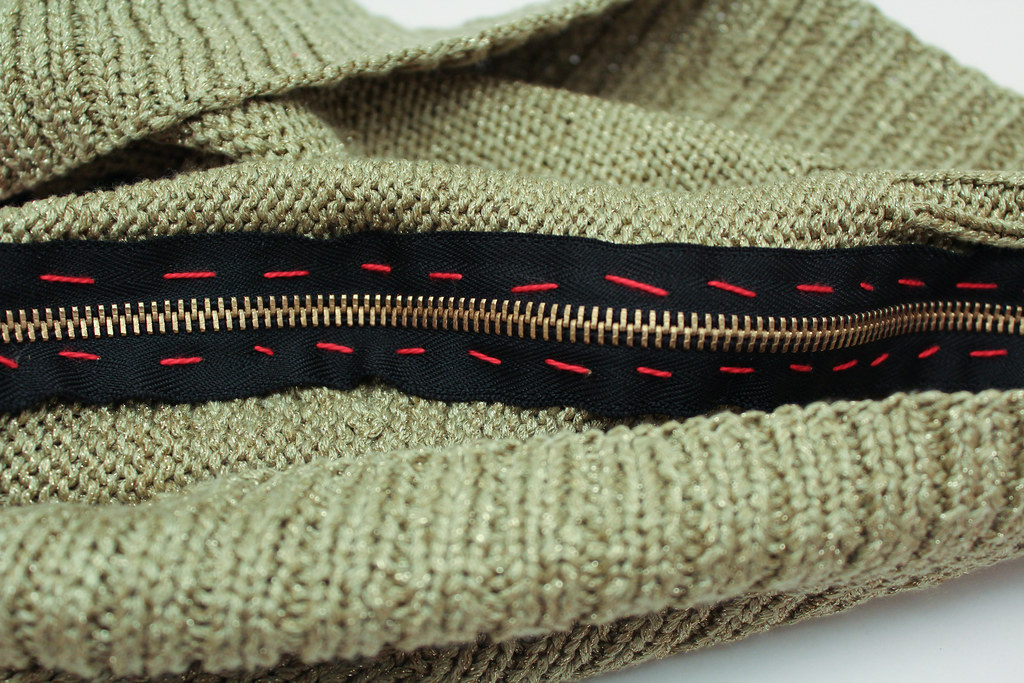
The basting stitch on the wrong side of your work.
Finally, you can sew the zipper to the piece. Depending on the piece, sometimes I use the yarn the sweater was worked in. Other times, if the yarn is delicate, loosely plied, or extremely fuzzy, I’ll use sewing thread in a color that is close to the color of the yarn. Either way, I use the same technique.
Working from the back, I secure the yarn. When I sew, I make sure that each time I’m going over only a single strand of yarn between two stitches. Basically go into the purl bump if viewing from the back. Mostly, I choose the space between the first and second stitches against the edge.
Working very slowly, I sew my way up one side, then up the other. Be patient. Take your time. Check your work often. Use small stitches. Because the zipper is located at the front of the sweater, I’m super careful to make sure that my sewing doesn’t show. Sometimes, if the fabric is wide, I’ll run a second set of stitches further out along the zipper band, so it doesn’t flop and lies nicely down. You can see I did this from the picture below.
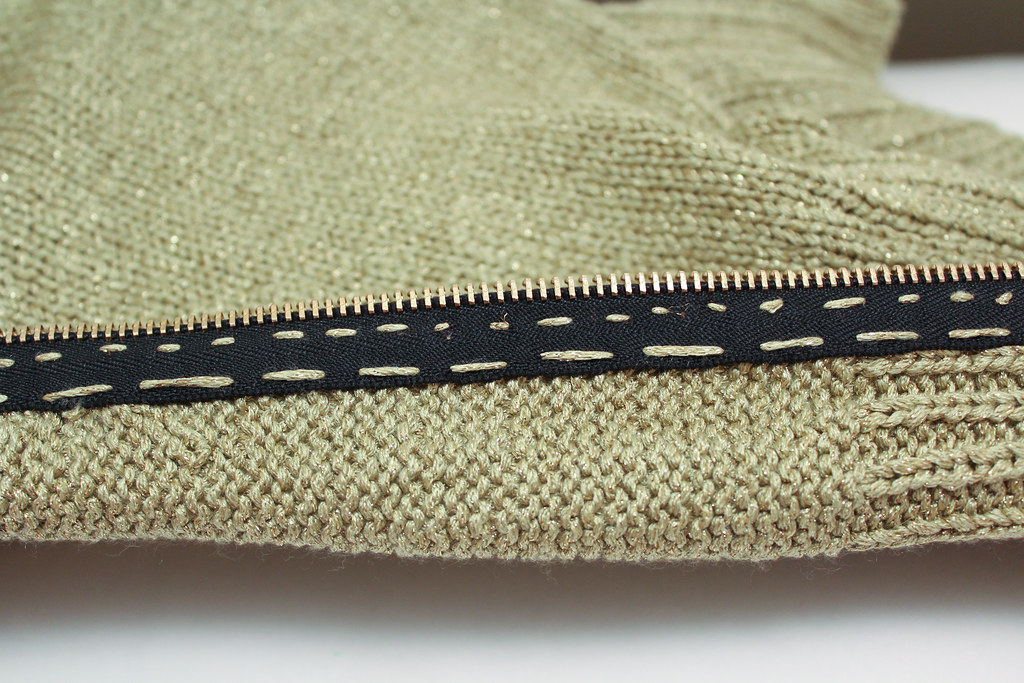
The zipper, sewn to the sweater with two rows of stitches.
When you’ve finished attaching the zipper to both sides of the fabric, I check my work. Check again to make sure the zipper moves smoothly along the track. Then, and only then, if I’m happy with what I’ve done do I remove the basting stitches. Finally, weave in your ends.









